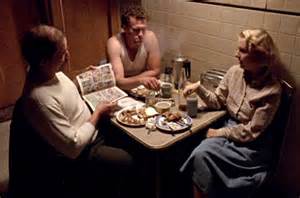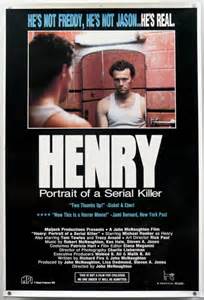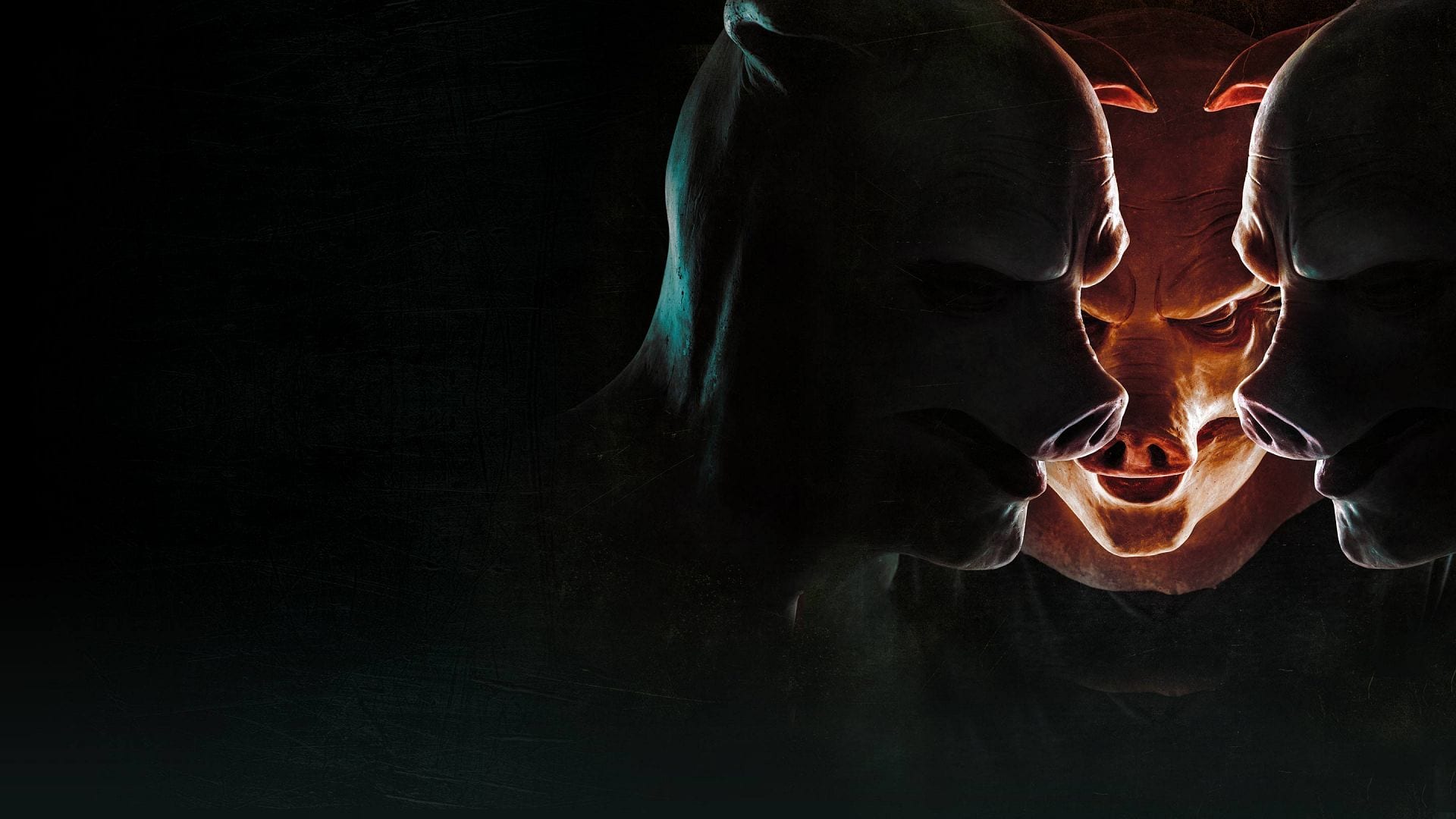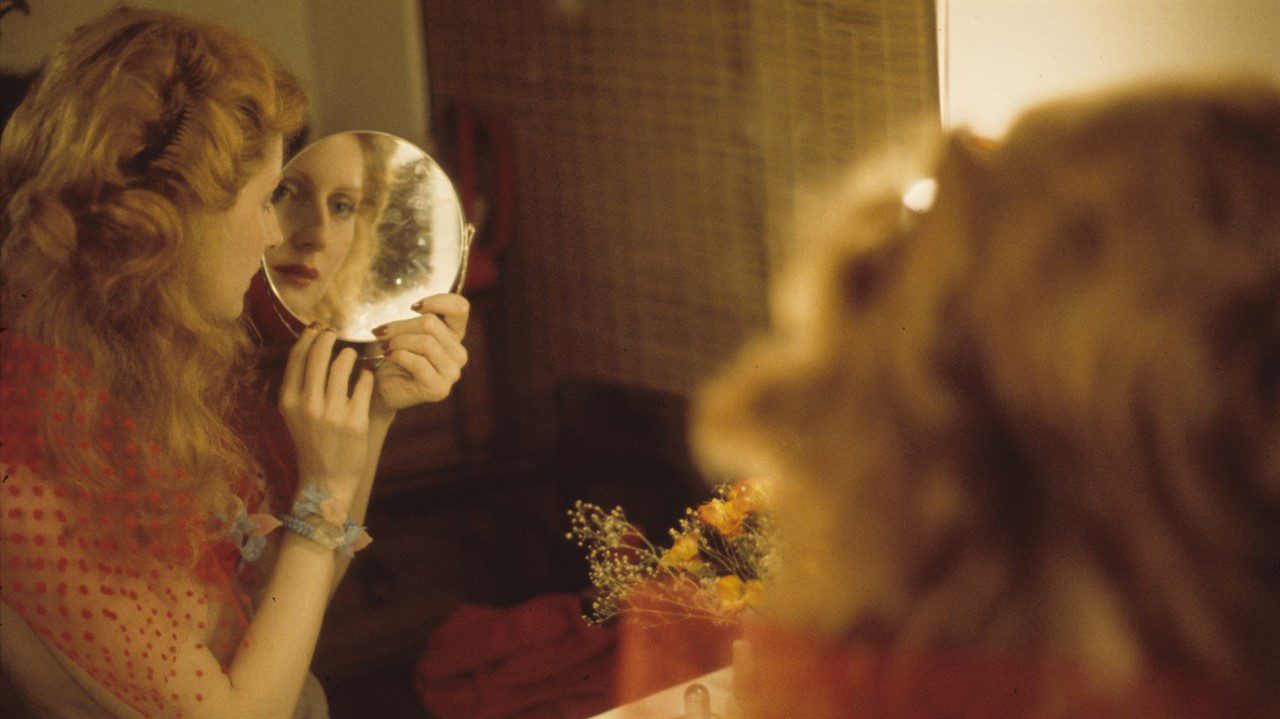Yes, it’s an obscenely short intro; doubly appropriate considering this week’s feature.
ScreamFish is about to get real.
Welcome to?Henry: Portrait of a Serial Killer.
Buckle up.
Don’t ever let anyone tell you horror is a simple cinematic genre.? Formulaic, in some instances, perhaps.? But never simple.
Horror can be humorous (A Nightmare On Elm Street), heartbreaking (Carrie), even, at times, humanizing (Rosemary’s Baby).
And sometimes, it can be so heavy, so visceral, that it blurs the lines between fact and fiction.? Such is the case with this week’s feature, the critically-acclaimed 1986 tour de force, Henry: Portrait of a Serial Killer. ?Originally stamped with an X-rating from the MPAA, the film is loosely based on real-life murderers Henry Lee Lucas and Otis Toole.
It is a brutal, often hard-to-watch gut-churner that refuses to adhere to cliched horror tropes and instead drops you kicking and screaming right into the middle of a violent storm that would more likely end up on the evening news than the silver screen.? There are no easy ways out.? There are no sacred artifacts that can save you, no magical incantations that will imprison the monsters or send them back to their own dimension.? That’s because in Henry, the monsters look just like us and they live on the same streets we call home.

It tells the story of a quiet, cold psychopath named Henry (Michael Rooker of The Walking Dead) who kills violently and wantonly, with no rhyme or reason.? There’s no dialogue as the film opens; instead, we tiptoe through the industrialized streets and wooded hideaways of Chicago, following the corpse-laden breadcrumb trail of Henry’s handiwork.? We never see how he’s killed any of those victims, but we hear their futile screams and pleas in ghostly voiceover that makes the visualized slayings even worse than if they’d been filmed.
We quickly meet Henry’s roomate, Otis (Tom Towles), who works as a lackadaisical gas-station attendant and peddles drugs on the side.? The two met while serving a stretch behind bars, though Otis is initially unaware of Henry’s current level of depravity.? However, he reveals to his sister, Becky (Tracy Arnold)–who soon moves in with the pair, her own past, apparently sordid as well–that Henry supposedly killed his own mother.? Becky slowly becomes infatuated with Henry, eventually questioning him about his mother’s death.? He admits that he killed her, though his story keeps changing as to how.? He confides that she had humiliated him as a child, abusing him in an assortment of ways.? Tracy reveals that her father also abused her, and he’s not the only one.? Otis takes every opportunity to gawk and grope at her in some seriously creepy incestuous ways.

Things hit a tipping point when we first see Henry in action.? When he kills two prostitutes in a fit of rage while he and Otis are out for a night on the town, Otis is initially repulsed. Soon though, he follows Henry’s lead and begins down an even darker path.? When the pair murder a black market electronics dealer and steal a camcorder, it opens up a whole new avenue to fuel their depravity.

While filming a violent home invasion (a head turner that even eclipses the infamous rape scene in Clockwork Orange), Henry has to stop Otis from crossing a line that even he won’t violate.? It’s only a matter of time before their opposing philosophies collide in a train wreck of violence that leaves one survivor, but no winners.
Though released in 1986, the film looks even older thanks to a grainy, washed-out hue.? The effect harkens back to the gritty, grindhouse feel of the 70’s, where you were never really sure if the violence on film was staged or real.? And you really do have to remind yourself at times that Henry isn’t a snuff film.? There is little emotion from Rooker or Towles, but that’s not a criticism: they simply reflect the heartless, ice-cold disposition of their characters so well that you believe they honestly could kill you as soon as look at you.
One would be hard-pressed to find a positive message here, perhaps save for Henry’s burgeoning love for Becky that we hope will one day lead to his repentance.? But that question, unfortunately, is never answered for us by the time the credits roll.? Instead, we’re left with a legacy of murder and vengeance that seems unfulfilling but all-too real: sometimes we never get the justice we want or the happy ending we feel we deserve.
According to Luke’s Gospel, “When the unclean spirit is gone out of a man, he walketh through dry places, seeking rest; and finding none, he saith, I will return unto my house whence I came out.? And when he cometh, he findeth it swept and garnished.? Then goeth he, and taketh seven other spirits more wicked than himself; and they enter in, and dwell there: and the last of that man is worse than the first” (Luke 11: 24-26, KJV).? While it’s doubtful that such demons left Henry or Otis when they were in prison, they had to remain a little dormant there. ?However, once both men were released back upon an unsuspecting civilization, the wicked things came back in spades and neither man chose any other alternative.? It’s a harrowing reminder of how far we can fall when left to our own devices (and vices) and how empty we can be when refuse to seek salvation.
If you ever wanted to get a glimpse inside the mind of a serial killer and you have a cast-iron stomach, or if you want to see a stellar I-can’t-believe-it’s-not-real piece of filmmaking–or if you just need a little motivation to stay on your praying knees, seeking forgiveness, watch Henry.
Just make sure it doesn’t become a self portrait.






